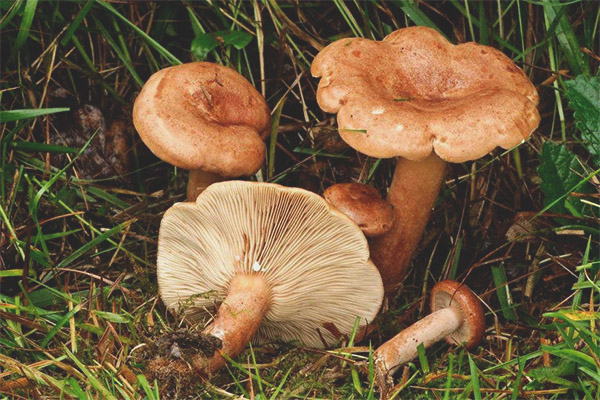The content of the article
The oak mushroom mushroom is a real handsome man, with its appearance strongly resembling a small redfish known to everyone, as if it were crossed with a milker. He, among other similarities, even the concentric stripes on the cap have almost exactly the same features. But at the same time, these two species of the mushroom kingdom have some differences. Also noteworthy is the fact that the oak wood has two different Latin names at once - Lactarius insulsus and Lactarius zonarius, as well as several Russian names.
Description
Oak oak is one of the representatives of the extensive Syroezhkov family, which, in turn, is included in the more significant in size genus of Mlechnikov. Thus, he is a close relative of the common syrozhek. Mushroom pickers often call it camelina or oak crab. The last name stuck due to the presence of the characteristic color of white juice in its pulp.The specialists in the mushroom world (mycologists), it is also known as the oak crab.
Appearance
The cap of a mature mushroom takes the form of a wide funnel or acquires a large irregular shape, with thin and wavy, slightly tucked edges. It feels dry to the touch and gets characteristic sticky properties only in wet weather, but at a young age of the fungus, depending on the natural conditions, it also often turns out to be wet. The skin has a very different color, starting with creamy yellow and ending with a reddish orange.Sometimes there are oak mushrooms, the cap of which is painted in a brick red shade.
The leg of this species is short and thick - with a length of up to 7 centimeters, its width ranges from one and a half to three and a half centimeters. Its shape is similar to a straight cylinder, sometimes having a noticeable narrowing or thickening. The pulp of the leg is dense, well, and she herself has a hollow structure. The color in most cases repeats the shade of the cap, but is slightly lighter. The most common are cream, pink and whitish options. In the rainy season, dark red spots can appear on the legs of oak trees.
The pulp of the fungus is dense and fragile, whitish or creamy, often acquiring a pale pink hue at the site of injury or cutting, has an unusually bitter burning taste, as well as a pleasant fruity smell. The cause of bitterness is the pulpy white milky juice of a liquid consistency, which does not change its hue due to contact with air. The plates, which gradually flow from the cap to the upper part of the stem, are wide and often located and have a reddish pink or yellowish color, which may vary depending on weather conditions or age.In the rain, they can turn into dark, even brown, and dry - lighten up to a white or cream color.
Spread
In the conditions of our country, such a mushroom as oak oak has been widely spread. The highest probability of meeting with him is characteristic of deciduous and deciduous, as well as mixed forests. Quite often it can be found in pine plantings. Favorite place for colonization of mycelium - oak, which is most directly reflected in its name. Preferring to boast on a humus loamy bud, oak oakwood is often found alongside trees such as beech or hazel.
This type of muzzle often grows in whole groups, however, sometimes it grows in single specimens. The most active fruiting begins in mid-summer and ends closer to mid-autumn, extending up to the beginning of October. The best time to harvest is the autumn period, since in summer the hat of the oak tree is in the underground or near-earth position, having a very dirty surface.In recent years, the oak tree, also known as the oak camelina, can be seen less and less, although a few years ago it grew in large quantities and literally everywhere.
Similar species
Edibility
The oak mush is a conditionally edible mushroom and is well appreciated in cooking for its excellent taste. But it can be eaten only in the form of preserves in salty form or after prolonged soaking in clean water for several days in a row. Pleasant taste is an excellent reason to go into the forest and “hunt” for this type of gruzdey. Yes, and collect it a pleasure - thanks to the burning taste of bitter juice, the flesh actually never spoils the worms and other pests.











To send